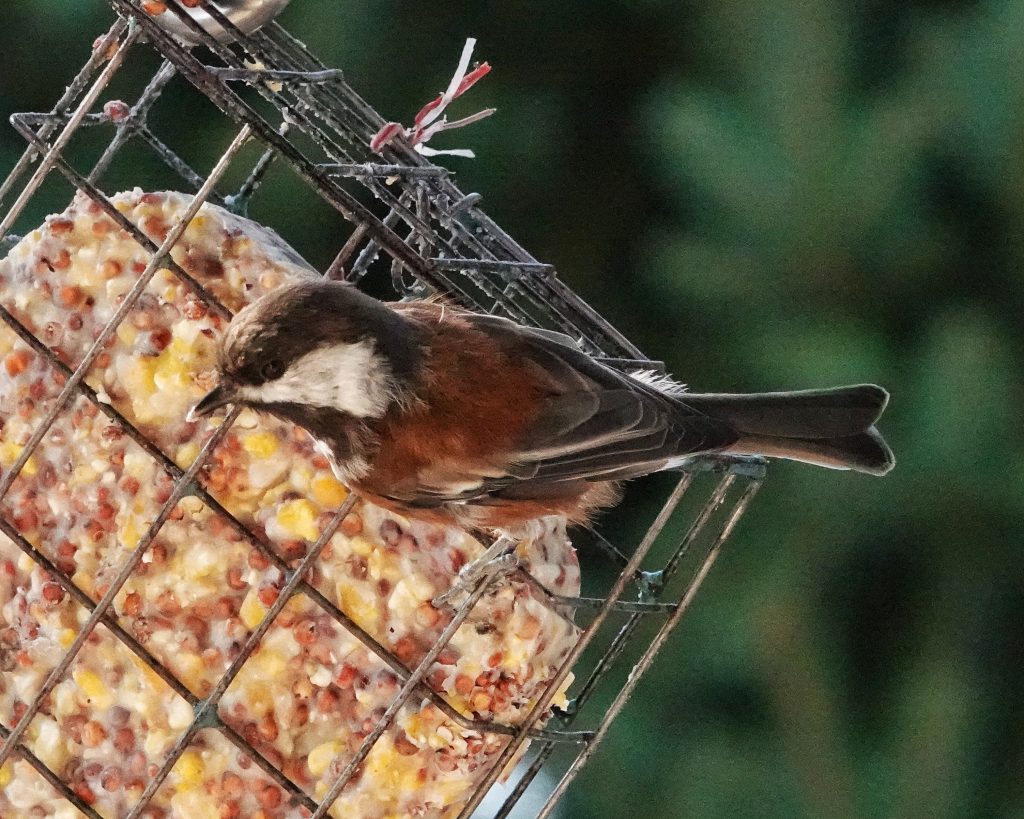
I really love Chestnut-backed Chickadees! As a bird that is endemic to the region I have chosen to call home I feel a kinship with them, and as a species that evolved amid the giant conifers that towered over this land, predating the arrival of humans of any kind by hundreds of millennia, I feel a deep and abiding respect. But as a species to be sought while birding, they long frustrated these color blind eyes that are not always able to distinguish between brown and grey, and it wasn’t until I realized that the crown of their head has a brownish grey (to my eyes) cast that is noticeably different than the deep black of the Black-capped Chickadees, that I was able to start confidently identifying them. And even after I could identify them, I still can’t seem to get a good photo of one. But that’s okay, because, when I put aside my desire to capture a memento of their presence, they are always simply a joy to watch.
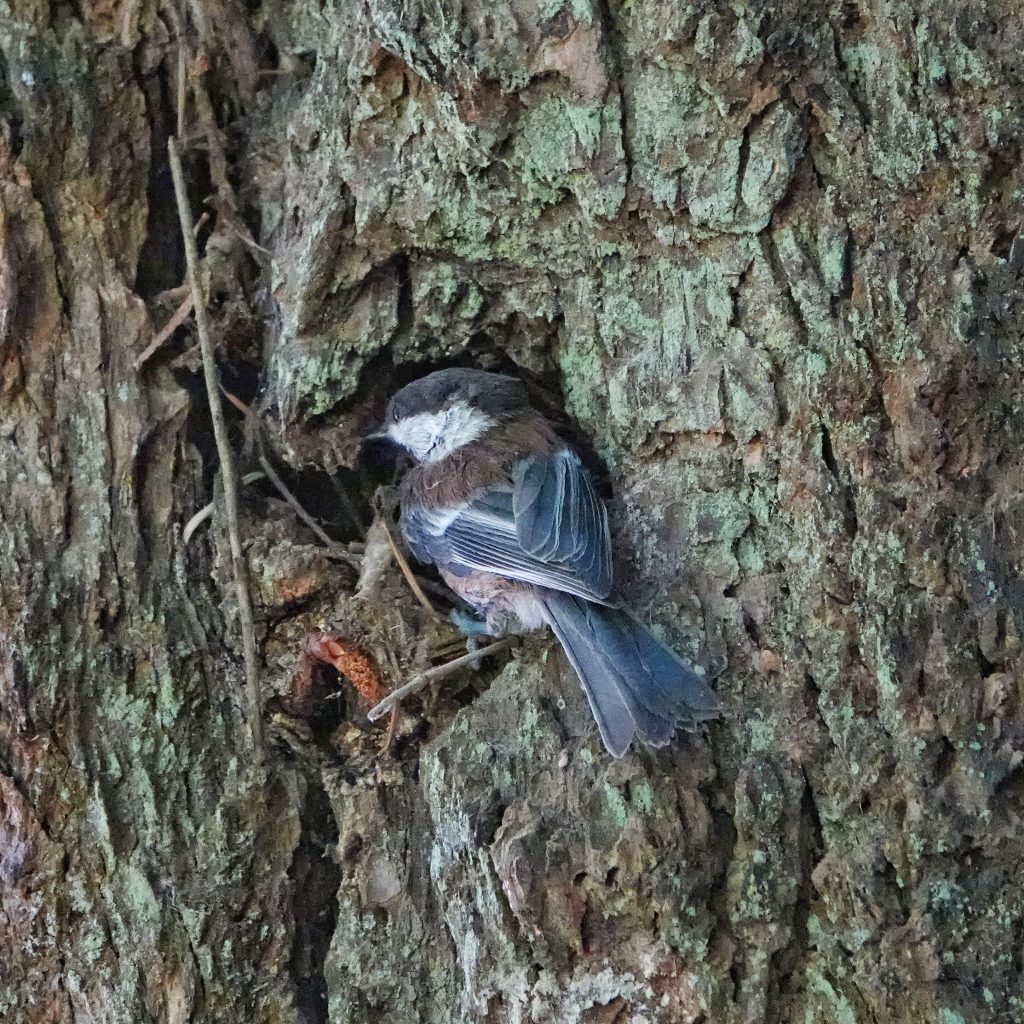
“Males take the first step in choosing nest sites, approaching a possible location while the female watches. Later, the female decides on the site, enters the cavity, and accepts pieces of vegetation brought by the male. Nest sites can be holes in rotted trees, stumps, and posts soft enough for the chickadees to excavate themselves, or old woodpecker holes. These nests are commonly 1-12 feet off the ground. Chestnut-backed Chickadees also readily use nest boxes…The Chestnut-backed Chickadee uses lots of fur in making its nest, with fur or hair accounting for up to half the material in the hole. Rabbit, coyote, and deer hair are most common, but hair from skunks, cats, horses, or cows appears in nests as well. The adults make a layer of fur about a half-inch thick that they use to cover the eggs when they leave the nest.” Chestnut-backed Chickadee Overview, All About Birds, Cornell Lab of Ornithology
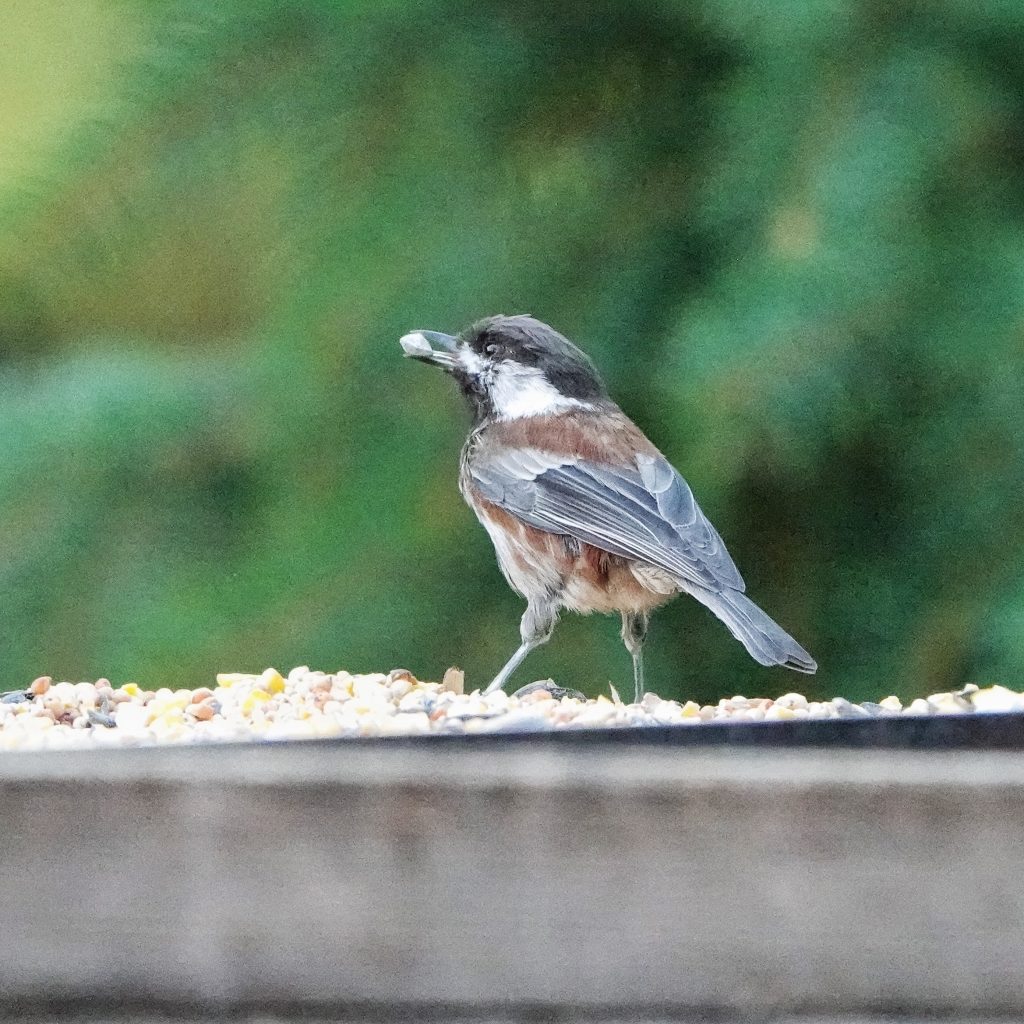
“Unlike most chickadee species, the Chestnut-backed does not have a whistled song. Instead, it sounds off with a series of dry chip notes more reminiscent of a sparrow. Its call, however, is a variant of the more familiar chick-a-dee-dee, similar to other close relatives.” Chestnut-backed Chickadee – American Bird Conservancy; Chickadees are specially adapted to endure Alaska’s rugged winters. They have much denser, better insulating, plumage than other songbirds their size and a special ability to put on fat quickly. Birds burn fat like fuel to keep themselves warm in winter. A chickadee can put on eight percent of their body weight in fat each day. Chickadees are also able to drop their body temperature at night in order to conserve their winter fuel.” Chestnut-backed Chickadee Species Profile, Alaska Department of Fish and Game; “It is not uncommon to see this chickadee swinging down off branches in search of insects to consume. Chestnut-Backed Chickadees are very friendly birds. These birds are social birds traveling in flocks of mixed birds consisting of creepers, woodpeckers, kinglets, and other species of birds. (“Infoplease ‘Timous'” 1994)” ADW: Parus rufescens: INFORMATION
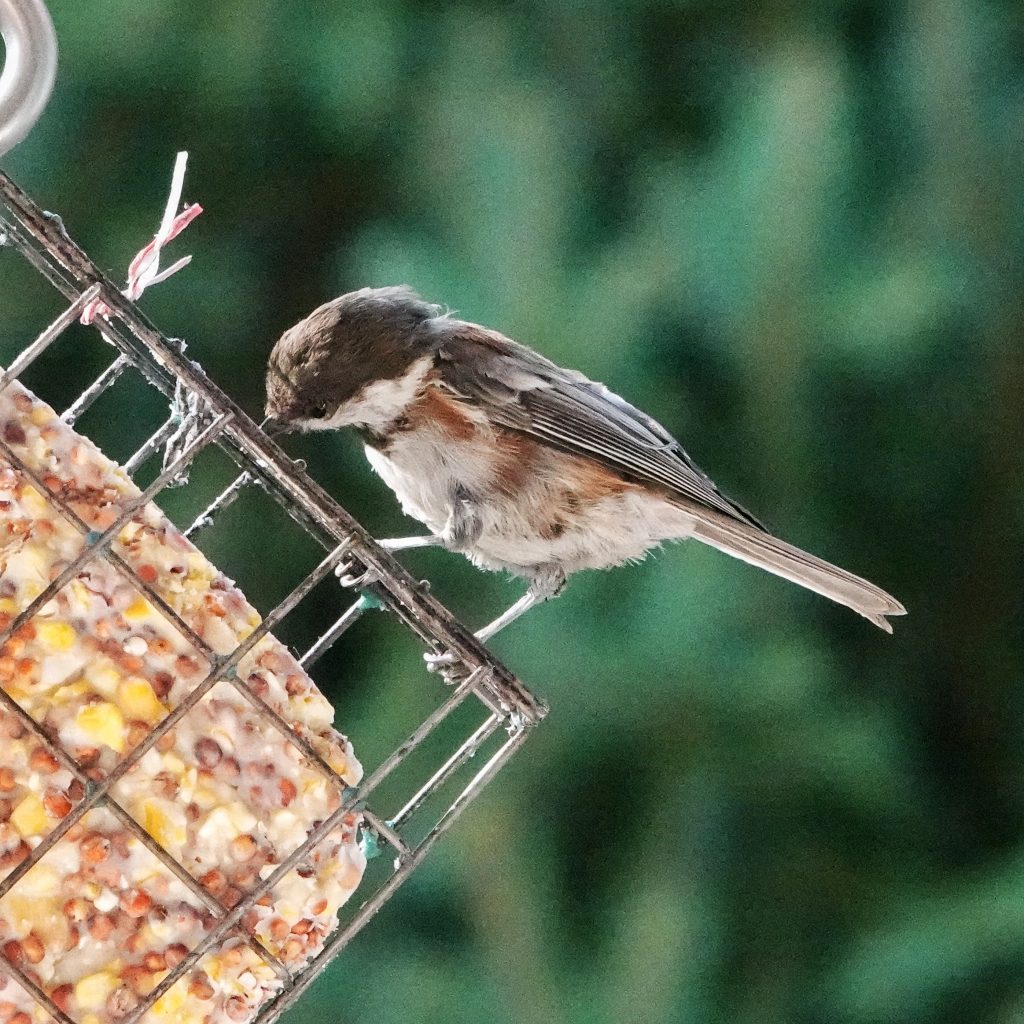
Description– “Smallest and relatively shortest-tailed of North American chickadees. Males: 105.0 mm to 120.5 mm. FeMales: 100.0 mm to 114.0 mm. Average mass for all 8.5 to 12.6. Cap, from forehead to hindneck extending to just below eyes, dark brown with slight grayish tinge becoming blackish through eyes bordered below by white cheek patch. Back to rump deep rufous-chestnut. A dark blackish-brown bib extends across malar region, chin, throat, and upper breast.” Chestnut-backed Chickadee – Montana Field Guide
Similar species– Black-capped Chickadees have grey backs and black crown; Mountain Chickadees have a white eyebrow stripe; Boreal Chickadees have a lighter brown head, with grey rather than white on the sides of the neck.
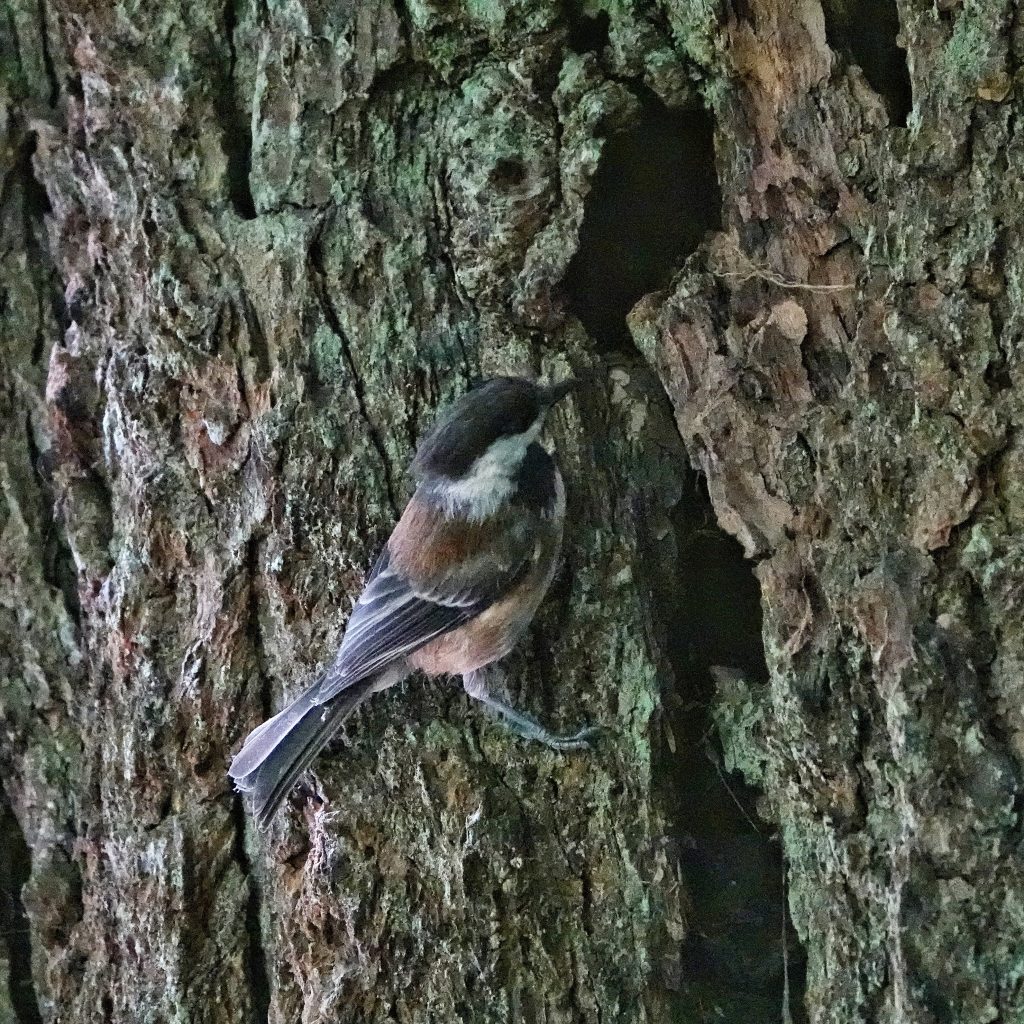
Habitat– “Found in humid coastal and interior forests from southeastern Alaska to southern California. Year-round resident throughout its range. Occurs within the densest coniferous forests, or along edges, where temperature is even and there is considerable shade (Dahlsten et al. 2002).” Chestnut-backed Chickadee – Montana Field Guide
Range– “The Chestnut-Backed Chickadee is a permanent resident of the Pacific Northwest forests, ranging from central California to south central Alaska. (Gilson 1994)” ADW: Parus rufescens: INFORMATION; in the PNW it is found west of the Cascades, and in sw Oregon/nw California, and on the west slopes of the Rockies and its associated ranges.
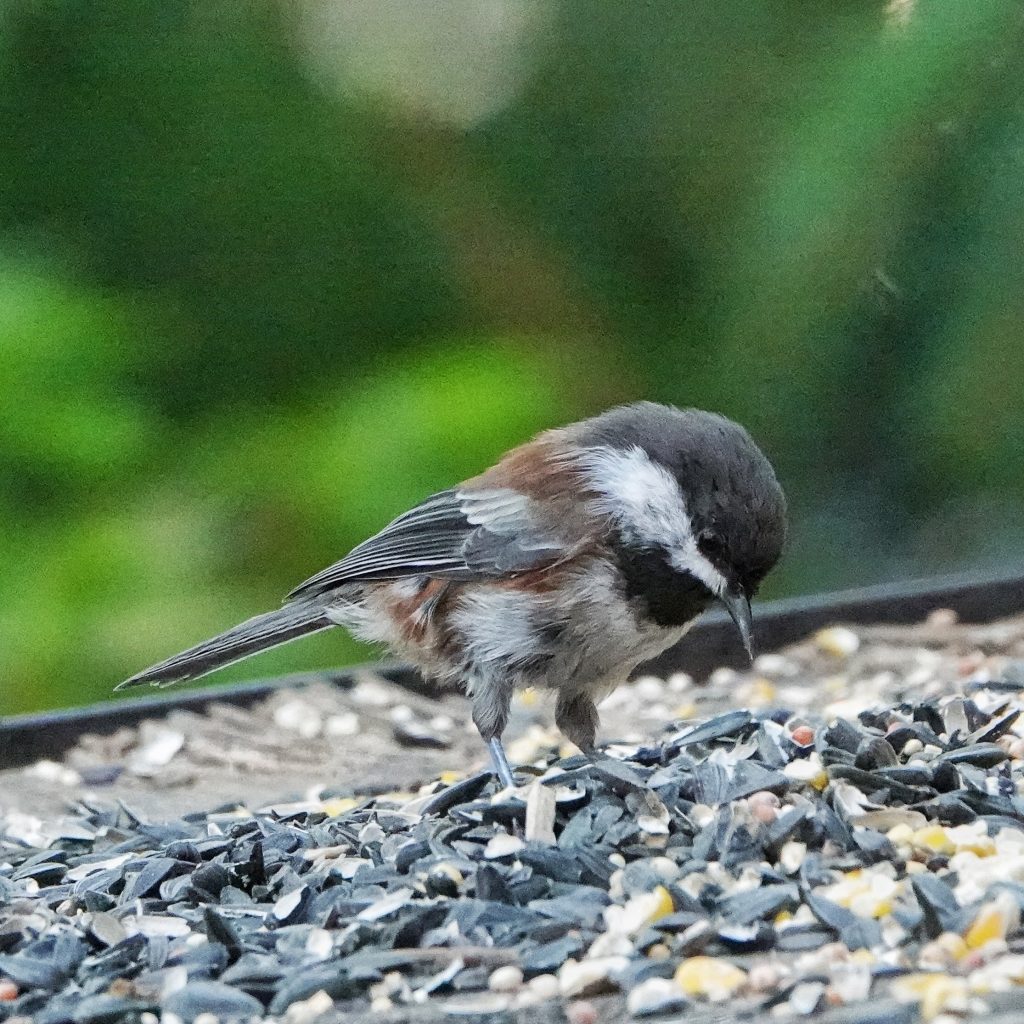
Eats– “Mostly insects, seeds, berries. Feeds on a wide variety of insects, including caterpillars, moths, beetles, leafhoppers, scale insects, small wasps, and others. Also eats spiders, seeds (especially of conifers), and berries.” Chestnut-backed Chickadee | Audubon Field Guide
Eaten by– “Chestnut-backed Chickadee nests get attacked by predators including mice, squirrels, weasels, snakes, and black bears.” Chestnut-backed Chickadee Overview, All About Birds, Cornell Lab of Ornithology; adults prey upon by bird hunting hawks and owls, and domestic cats.
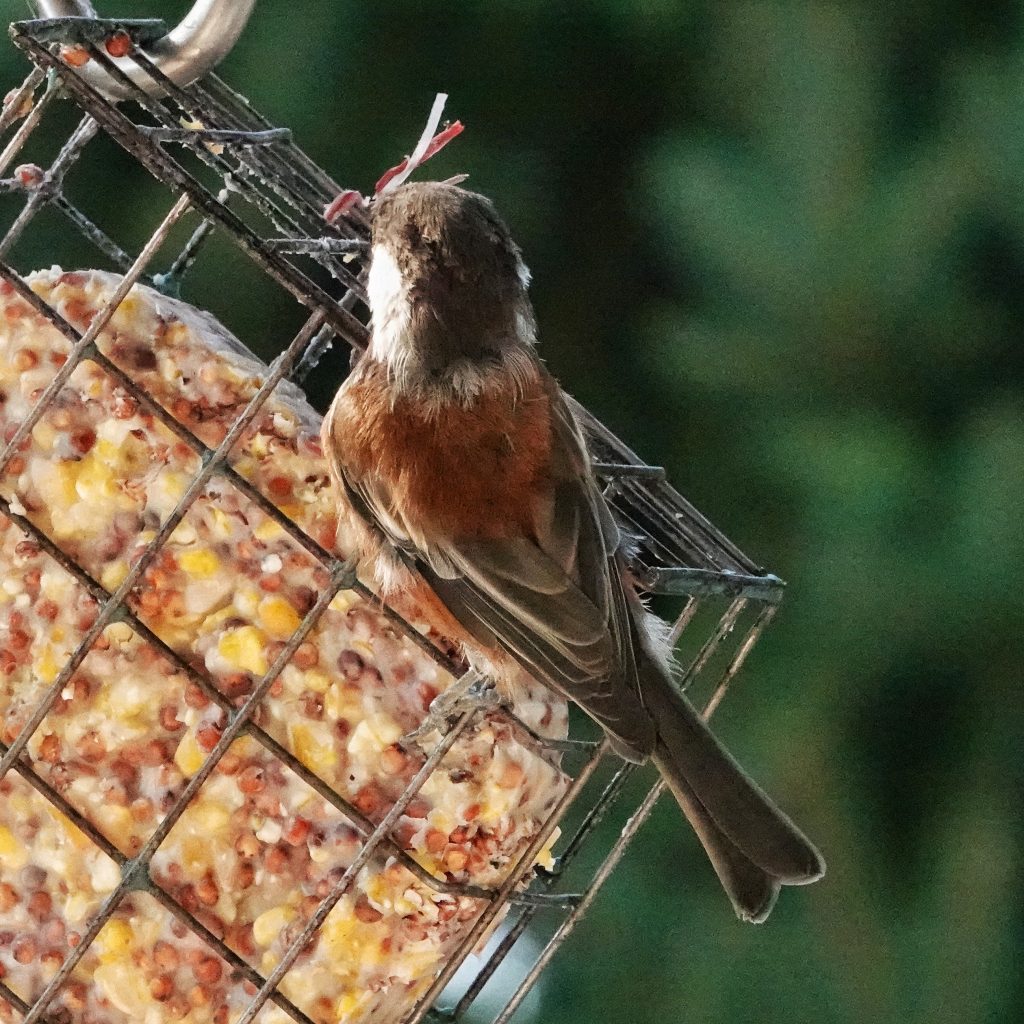
Life cycle– “Nesting behavior is not well known. Members of pair may remain together all year. Nest site is in hole in tree, usually low, 2-20′ above ground; can be much higher (reportedly up to 80″). Will nest in the same site more than one year. Uses natural cavity in dead or rotten wood, the chickadees often excavating or enlarging it themselves; also will nest in old woodpecker holes or in nest boxes. Nest has foundation of moss, lichens, feathers, bark fibers, plant down, lined with soft materials such as animal hair…Eggs 6-7, sometimes 5-9. White, with fine reddish brown dots concentrated at larger end; sometimes unmarked white. Incubation is probably by female, but details not well known. If disturbed, adult on nest flutters wings and makes loud hissing noise. Young: Probably cared for by both parents. Development of young and age at first flight not well known.” Chestnut-backed Chickadee | Audubon Field Guide
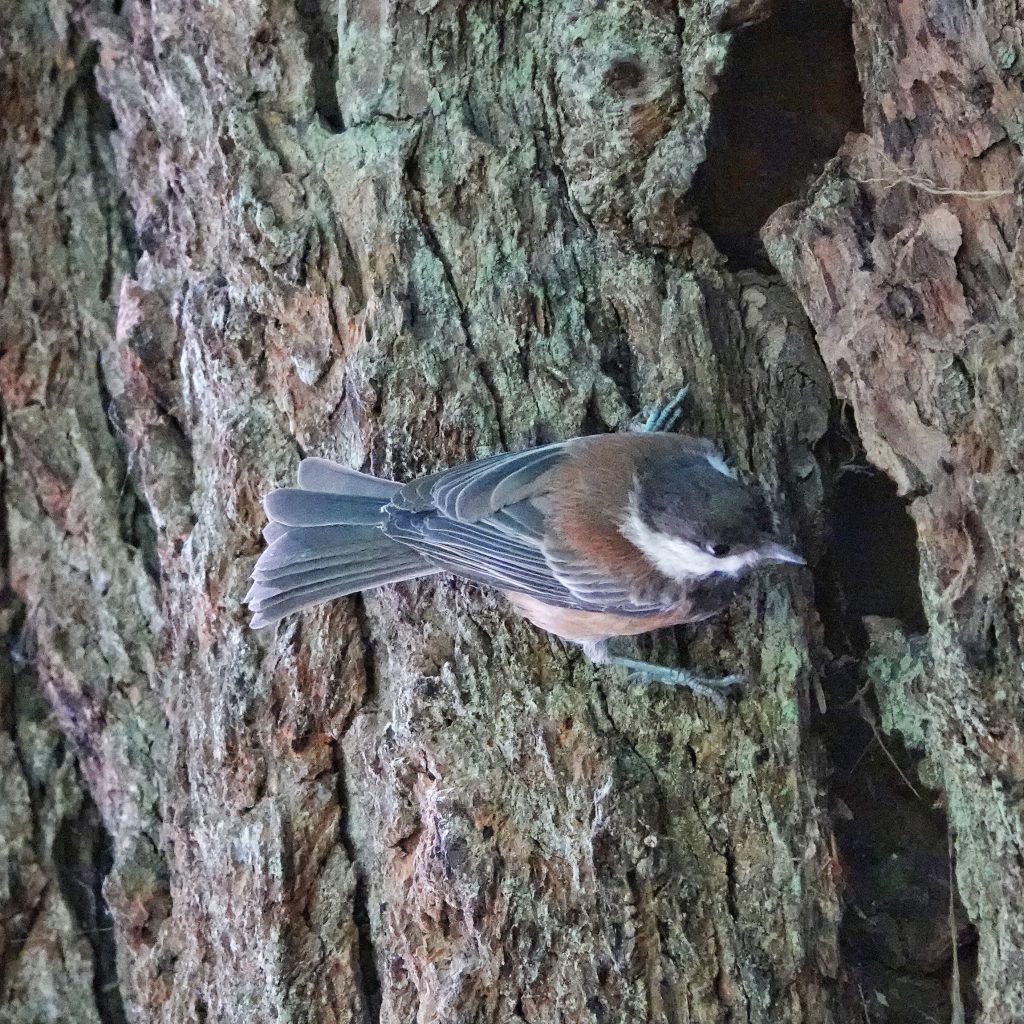
Adults active– Year around
Etymology of names– Poecile is from the Greek word for colorful, which was itself the root word for one meaning ‘small, colorful bird’. The specific epithet rufescens is from the Latin word for ‘becoming red’, and is probably a reference to the chestnut back the gives this bird it’s common name.
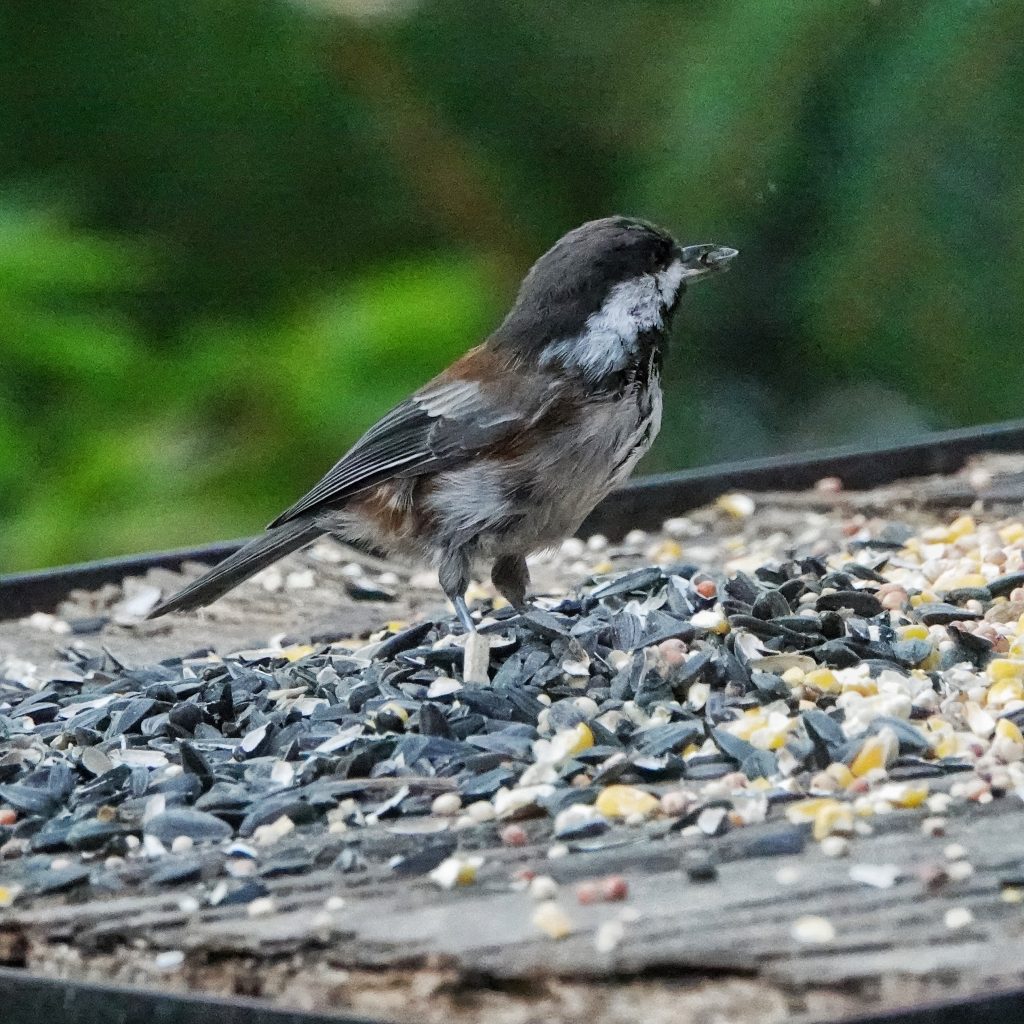
Chestnut-backed Chickadee | Audubon Field Guide
https://www.allaboutbirds.org/guide/Chestnut-backed_Chickadee/overview
Chestnut-backed Chickadee – American Bird Conservancy
Chestnut-backed Chickadee – ID, Facts, Diet, Habit & More | Birdzilla
ADW: Parus rufescens: INFORMATION
Chestnut-backed Chickadee – Montana Field Guide
Chestnut-backed Chickadee Species Profile, Alaska Department of Fish and Game
Chestnut-backed Chickadee – eBird
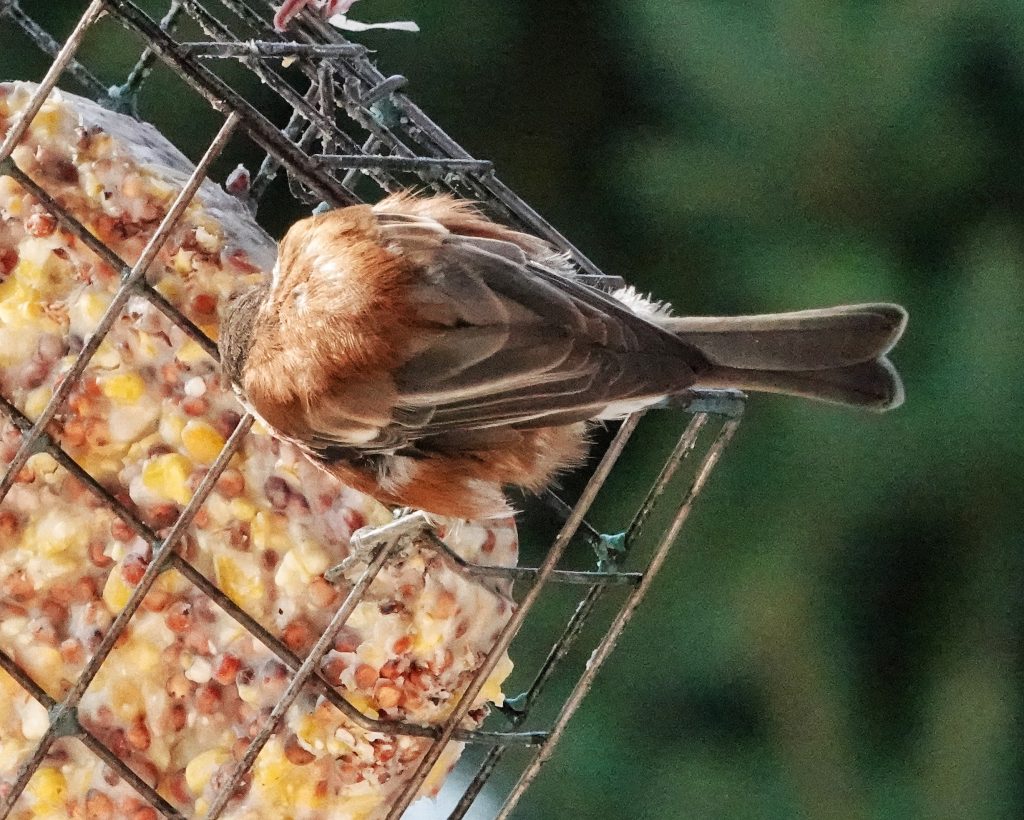
These birds interest me because I have both the chestnut-backed and the black-capped chickadee in my yard. Interesting, that the two species coexist together, yet separate. And I frequently see them in groups with other birds. I especially love it when they visit my bird bath.
Dan, I often identify them when I can’t see the color clearly by their dark sides in comparison with a Black-capped.
Thank you, Dennis! I’ll keep that in mind.